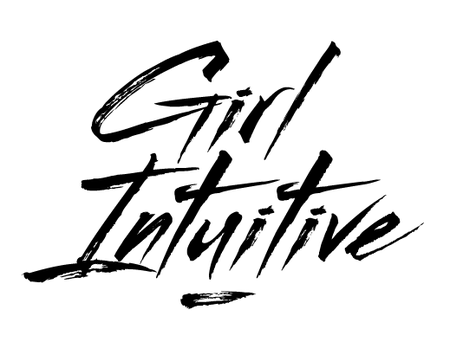I’m sure you’ve noticed that tie-dye has made a major comeback! The trend reached a peak last year but it is expected to remain strong throughout 2021. What we love most about tie-dye is that it reminds us that it was colored by hand. And while undeniably tie-dye, this art is increasingly popular and is applied to everything from yoga pants to athleisurewear, dresses, cardigans, tunics, scarves, and everything else. Unlike when this trend was a hit in the 60s and 70s, the current trend favors pastels, ombre, fading, and simple black on white.

Why Is Tie-Dye Trending?
We’ve spotted top fashionistas of the world, celebrities from Jennifer Lopez to the Hadid sisters, Heidi Klum, and Selena Gomez loving tie-dye clothing. We have even seen Anna Wintour, editor-in-chief of American Vogue, looking stunning in a tailored plaid and tie-dye dress, and gents like Usher and Justin Bieber rocking this trend. This dying technique has returned for a couple of reasons. First, with social distancing requiring us to work from home, loungewear became a weekly (or, honestly, daily) go-to, and because tie-dye is most often applied to cozy cottons, it achieves a look that is comfortable, colorful, and stylized. That extra time at home has many of us trying a variety of arts and crafts as an activity that you can zone out and relax. But even before the pandemic, tie-dye was working its way back for several years. In 2019, tie-dye filled the runways. And it has been Japanese art becoming more popular throughout the years.
"There has been a tie-dye trend for quite a while now. I almost think of it like leopard print — a new neutral that is actually not so neutral. In some ways it serves to dress up or make otherwise boring clothing — like sweatpants and T-shirts — more exciting and interesting," Lucy Collins Payne, assistant professor of philosophy at the Fashion Institute of Technology, told TODAY Style.
What Are The Different Types Of Tie-Dying?
Hand dying is an art form with countless techniques, some of which have been practiced for centuries. If you’ve noticed that you love some tie-dyed pieces but not others, it could be the color or the size and scale—but it could also be the dying technique.
These techniques require different folding, tying, knotting, shaping, or securing materials to create stylized patterns. For the crafty in you, try these at home, but don't despair as you can purchase pieces that you already know will love! When shopping, keep in mind what the different tie-dye techniques mean:
- Standard Tie-Dye—rubber bands or strings create this look. The areas covered by the rubber bands or strings remain white, only dying the exposed areas. The artistry is in how the material is gathered and where the dye is applied.
- Mineral Wash—this is the modern take on 80s acid washing. This look is achieved by washing preshrunk cotton with bleach-soaked stones.
- Ice Dye—this method is achieved by prewashing a shirt and loosely crumbling it up while damp. The crumbled shirt is secured with rubber bands, then ice is applied on top and the dye drips through the ice onto the garment.
- Ombre—or dip-dye effect achieved by hand-dipping fabric in dye so that it gradually goes from light to dark, or sometimes from one color to another.
- Batik—instead of folding or tying, this Indonesian method of dying is achieved by applying wax on fabric in a creative pattern. After the wax hardens, the fabric is dyed, then boiled to remove the wax.
- Shibori—is an intricate Japanese method of shaping, folding, and securing fabric prior to dying to create intricate patterns. The finished look is so detailed it looks almost like it has been dyed one brushstroke at a time.
- Oil Wash—this technique creates a faux-aged look by washing the dyed fabric with oil and a binding agent. This technique is often paired with intentional fraying or raw edges.
Where To Wear Your Tie-Dyed Fashions?
Comfy printed sweatsuits are exploding in popularity, but tie-dye can also dress up any number of garment pieces. While shopping for these variations of tie-dye clothing, keep in mind that they support both casual and sustainable fashion. Here are a few designs that we love:

- If you want to look sleek but act like you do not mean it, try these Fate Distressed Jogger pants. Contrary to the rest, the maroon and black colors offer a chic appeal, so it's like you're lounging but if you leave the house you're not caught right-handed.

- A Mono B Cotton Terry 2-piece set is perfect for running errands because you are young and you are free!

- Wear this Urban X cardigan, the subdued colors of pink and mocha give a sense of fresh Spring air, and pair it with denim.

- Head to yoga, hit the gym, or workout at home in these cozy Crystal Marble Yoga pants.

- Hang out with your BFFs with this deep-dark-to-light pink ombre tie-dye maxi skirt.

- For a holiday at the beach, wear the Santa Barbara Beach Pants.

- Stunning and chic are encapsulated in this Storia Rainbow Tie-dye Color Block Maxi Dress.
- Support artisans from India, with these eco-friendly batiks and Shibori tunics to create countless looks.

- Layer essential tees like this oil washed long-sleeved top to wear solo with denim or leggings for a casual day in.
While Glamour Magazine called tie-dye to be "the biggest trend of the year" in 2020, the colorful trend is here to stay, now filtered up to the major designers, who are re-imagining tie-dyed fabric in their latest collections.
"From caftans to maxi dresses, sweat suits and denim, these shibori-inspired patterns hit every color of the rainbow, and are decidedly bougie." said Harper's Bazaar for BBC news for their 2021 fashion forecast.
You can find these and many more at the Girl Intuitive Tie-Dye Collection, here.



Commentaires
0 commentaire